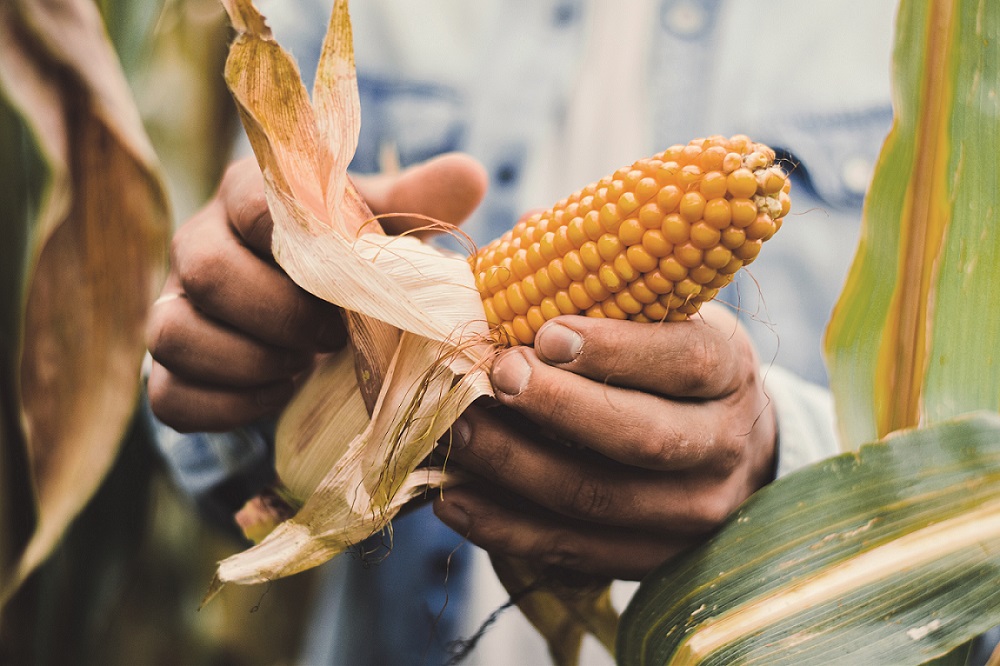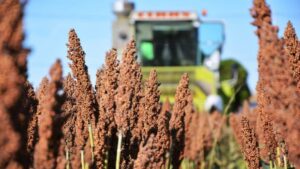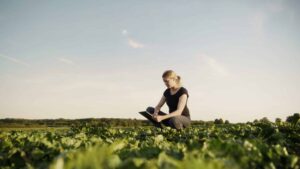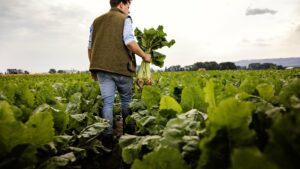The European Green Deal and the Farm to Fork Strategy set clear objectives for sustainable agriculture in Europe. Against this backdrop, the EU Commission recently adopted new decisions on the Common Agricultural Policy (CAP). One of the central issues is that diverse crop rotations should help reduce the use of pesticides. These political requirements lead to the fact that growing grain corn is an increasingly attractive option for many farmers in Europe. Under the DryDown+ label, KWS is launching specific grain corn varieties that support extended crop rotations, even in untypical grain corn regions. They also offer the option of sustainable cultivation of grain corn, by reducing drying costs and hence lowering CO2 emissions.
Due to the climate conditions in cooler regions of Europe, grain corn needs to be dried after harvesting so that it can be stored. The rapid maturing DryDown+ varieties are characterized by very early flowering and an extremely fast release of grain moisture. On the one hand, this offers the option of reducing drying costs in typical grain corn regions and thus making cultivation more sustainable. On the other, these variety traits make it possible and attractive to also cultivate grain corn in cooler regions in order to extend crop rotations.
Extended crop rotations
The European agricultural policy focuses on extending crop rotations, with farmers being encouraged to adopt new approaches. Grain corn loosens up crop rotations. Nevertheless, especially in northern regions and at high altitudes, the heat available heat sum (accumulated temperature) during the vegetation phase is often the limiting factor for cultivation. However, the specific traits of the DryDown+ varieties now also allow the cultivation of grain corn in these regions. In addition to its high profitability, grain corn contributes to the build-up of humus through the residual plant remaining on the field, improves the soil structure, stores nutrients and assists to better management of pests and diseases.
Lower greenhouse gas emissions
The varieties that KWS has developed as part of a breeding program specifically designed for this purpose can either be harvested very early with the usual grain moisture or at the conventional harvesting time with a very low moisture content (~ 20 percent). The low grain moisture can reduce the drying effort required after harvesting. As a result, drying costs will be lower, the drying process requires less labor for farmers, and greenhouse gas emissions can be reduced. Internal trials at KWS show that reducing crop moisture by around 10 percent can lower necessary drying costs by up to 35 percent. The wide harvest window also contributes to greater flexibility in the farms’ work planning.
Making the unthinkable possible
General breeding goals are varieties with a healthy and rapid maturing behavior, early flowering, a high and reliable grain yield, and standing power. However, the special focus of the KWS breeders is on accelerating the dry-down, in other words, the drying behavior of the grain corn varieties. In the medium term, the aim is to achieve stable grain moisture levels of approximately 20 percent, while the theme of the vision remains achieving a stable commodity moisture level of 15 percent.
Minimizing the use of resources and enhancing the diversity of crops and varieties are part of the KWS 2030 Sustainability Ambition initiative, in which the company sets measurable goals to deliver solutions for sustainable agriculture. Extended crop rotations and potential reductions in CO2 emissions from DryDown+ varieties contribute specifically to these goals.









